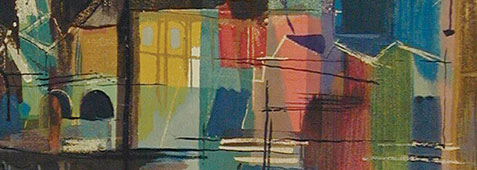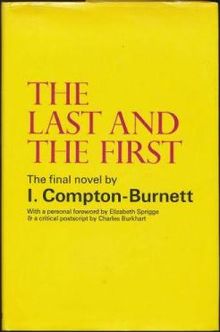A Spot of Housekeeping
 The observant among you may have noticed that I’ve been shamefully neglecting the blog in recent weeks. This is partially due to time being spent on more pressing needs (I have no idea how the Old English Thorn and I have accumulated so much stuff but, thanks to our loving parents, it is all now sitting in giant plastic boxes taking up space in our study and needs sorting through and [hopefully] disposing of), and partially due to the fact that my poor little laptop is dying. I’ve had it for about eight years now, which is ancient in computer terms, and it can no longer cope with running anything which requires it to work at speed. Such as the Internet, for example.
The observant among you may have noticed that I’ve been shamefully neglecting the blog in recent weeks. This is partially due to time being spent on more pressing needs (I have no idea how the Old English Thorn and I have accumulated so much stuff but, thanks to our loving parents, it is all now sitting in giant plastic boxes taking up space in our study and needs sorting through and [hopefully] disposing of), and partially due to the fact that my poor little laptop is dying. I’ve had it for about eight years now, which is ancient in computer terms, and it can no longer cope with running anything which requires it to work at speed. Such as the Internet, for example.
I highly doubt that I’ll catch up with all of this year’s reviews before we’re well into the next one, so I’ve decided I’m not going to worry about it. The reviews will continue to trickle in and I will write them for everything I’ve read, but some may be more complete than others depending on how much of the book I can remember. Thankfully I’m unlikely to have the same problem next year, as my greatly reduced post-wedding reading rate means I’m reading about half the books that I was before September and so it should be much easier to keep up.
As with all things, the further I fall behind, the less inclined I feel to write reviews and so instead I’ve been doing a bit of blog housekeeping in the fleeting moments when I can persuade my computer to do something online without timing out:
- I decided that the list of all the authors whose books I have reviewed in the right hand sidebar was getting too long and unwieldy, so I’ve cut it down so that it just shows my favourite authors. It makes things much tidier and also gives a better overview of my literary tastes than the complete list.
- The giant alphabetical list may have gone from the sidebar, but it has migrated to a different location. Instead it is now hidden under the ‘Author Review Index’ tab at the top of the blog, so it’s still easy to see at a glance which authors I have read and reviewed.
- Although I started Old English Rose Reads in August of 2010, prior to this I reviewed the books I read on GoodReads and LibraryThing. I’ve now copied those reviews over to this site (somehow managing to fit them all in between the date of my first post and my first review on the blog so that they’re all still in chronological order) and they’re all tagged with Archive Review.
I have a few other blog-tidying projects in the works, but I’m going to be good and accomplish a few more reviews before I allow myself to be distracted by such things. Or so I tell myself anyway.
Review: ‘Daisy Fay and the Miracle Man’ by Fannie Flagg
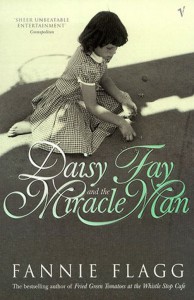 Sometimes an author is known for one book more than any other, and this is certainly true of Fannie Flagg, best known as the author of Fried Green Tomatoes at the Whistle Stop Cafe. Whether it’s because this is her best book or whether it’s because of the film, I don’t know as, though I’ve had that book on my shelves waiting to be read for more than a year now, but somehow it was the less well-known and more recently acquired Daisy Fay and the Miracle Man which I ended up reading first.
Sometimes an author is known for one book more than any other, and this is certainly true of Fannie Flagg, best known as the author of Fried Green Tomatoes at the Whistle Stop Cafe. Whether it’s because this is her best book or whether it’s because of the film, I don’t know as, though I’ve had that book on my shelves waiting to be read for more than a year now, but somehow it was the less well-known and more recently acquired Daisy Fay and the Miracle Man which I ended up reading first.
The novel is divided into two sections. In the first, Daisy Fay lives with her Momma and Daddy in the largely deserted coastal town of Shell Beach, running a failing malt shop with with mysterious contents hidden in the freezer. In the second, seven years after the book begins, Daisy leaves Shell Beach to compete in the Miss America Pageant.
The book is written in diary form and the distinctive and engaging voice of the narrator is apparent from the very first words of Daisy Fay and the Miracle Man:
Hello there…my name is Daisy Fay Harper and I was eleven years old yesterday. My Grandmother Pettibone won the jackpot at the VFW bingo game and bought me a typewriter for my birthday. She wants me to practise typing so when I grow up, I can be a secretary, but my cat, Felix, who is pregnant, threw up on it and ruined it, which is ok with me. I don’t know what is the matter with Grandma. I have told her a hundred times I want to be a tree surgeon or a blacksmith.
The most wonderful thing about this book is undoubtedly Daisy Fay herself. Unlike a lot of young characters in literature I read, she is neither wise beyond her years nor imbued with an idealised amount of childlike innocence: Daisy is a perfectly believeable eleven year old. She is bright and knows her own mind (although her opinions are sometimes rather impractical, as with her choice of career), but she is also quick to be swayed by others and is anxious to please. She is independent, adventurous and optimistic; she’s the type of character who epitomises the word ‘spunky’. The big gap between her warm, funny narration and her frequent lack of understanding of the things she describes, obvious to the adult reader, means that Daisy Fay and the Miracle Man is at once one of the most humorous and one of the most heart-wrenching books that I’ve read this year.
Her character shines through when she writes her own will, believing that she is likely to be killed:
This is my last will and testament and I am sorry it is so small, but as you know, most of my stuff burned up. I leave my sweetheart pillow to my mother. I leave my clothes to Michael, even though he will probably not want to wear that one pair of girls’ blue jeans. If not, give them to Patsy Ruth Coggins.
I leave my cat, Felix, to my daddy.
And the last thing I have to say is that I am responsible for burning down the malt shop. I did it by mistake, so don’t try and take the insurance money away from Daddy.
It wasn’t enough anyway.
It is not just Daisy Fay who leaps off the page; there is a whole host of characters who are bold, brash and entertaining but which manage to stay just the right side of believeable. My favourite was Mrs Dot, self styled society lady who runs the debutante society in Shell Beach and is always dispensing little pearls of nonsensical wisdom. Thanks to her I now know that:
Sincerity is as valuable as radium.
A lot of the events that take place are slightly ridiculous, such as Daisy’s daddy making her use an inexpertly stuffed fish to win a fishing competition or pretend that she has come back from the dead so that she can make money by preaching, but the story and the situation still feels remarkably real. I think it’s because the novel is less about what happens and more about who it happens to; it is the characters who are most important and they are excellent.
The way in which Fannie Flagg opens the second section of the novel had my heart breaking for Daisy. When Daisy’s story picks up again she has aged convincingly although in a way that made me ache for her. Still ultimately vulnerable and still desperate to please, she is less open than when the reader met her before. Almost inevitably, she has grown a brittle shell around her and though she remains as bright and funny as before she has lost her innocence.
Skimming back through this book to review it, I was reminded of how much I loved it at the time. Part of me wants to sit here and reread it right away, it’s just that good, but I think I’ll wait and instead not leave it too long before reading one of her other books. Thankfully there are a few of them.
Daisy Fay and the Miracle Man by Fannie Flagg. Published by Vintage, 1993, pp. 320. Originally published as Coming Attractions in 1981.
Booking Through Thursday: Hard
What’s the hardest/most challenging book you’ve ever read? Was it worth the effort? Did you read it by choice or was it an assignment/obligation?
The hardest book that I’ve ever read is without a doubt Robinson Crusoe by Daniel Defoe. This wasn’t because the book itself was particularly challenging (it’s actually incredibly straightforward, if a bit wordy in the way of most 18th century novels) but because of the time that I read it. I read Robinson Crusoe as the first set text on my first year ‘Inventing the Novel’ course at university. It was hard because there were a hundred and one things that I would rather be doing; because I had just discovered medieval literature and wanted to spend all my time buried in that; because the Shakespeare lecturer was opening my eyes to so many new interpretations of plays that I thought I knew well; because the library was filled with more interesting books. Most of all, it was difficult because it was just boring.
There, I’ve said it. I thought Robinson Crusoe was dull as ditch water. There’s nothing wrong with the story in itself, but the level of detail necessitated by the 18th century desire for realism is just mind-numbing. Robinson Crusoe doesn’t merely grow grapes, oh no; he discovers vines, digs some up, transports them to his garden, replants them, waters them, cultivates them, watches the grapes grow, harvests the grapes, weaves baskets to put them in, eats some grapes and dries some for storage as raisins. Being cast away on a desert island is exciting: the minutiae of daily life and survival is not. There’s also the bizarre section at the end of the novel which everyone always forgets in which Crusoe and Friday travel to Europe and hunt bears and wolves. Getting through that lot was hard.
I finished it because it was a set text, I knew I was going to have to write several essays and answer an exam about it and I don’t believe in doing that without reading the book properly. Had it not been for that stick I would happily have ignored it.
Review: ‘My Dirty Little Book of Stolen Time’ by Liz Jensen
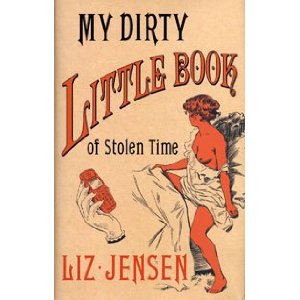 After two distinctly disappointing reads I needed something that was sure to be good fun and not to take itself too seriously. Thankfully my mammoth TBR pile is able to rise to any challenge, and after a quick flick through my library I settled on the wonderfully titled My Dirty Little Book of Stolen Time by Liz Jensen. This book was first brought to my attention when the lovely Fleur Fisher listed the title as part of her Clearing the Decks project, in which she chooses books to read and then get pass on. While they may lead to a reduction of her own library, these posts seem to be only adding to mine as I keep discovering lots of titles which appeal to me enormously. This particular one she mentioned back in March, it instantly went onto my wishlist and it was the first book I purchased once my self-imposed Lenten book buying restriction was lifted. It was off the TBR pile and into my main library within the month, which is a pretty swift turnaround for me these days, and I’m glad I got to it so quickly as it proved to be a great piece of entertainment and the perfect antidote to the rather serious books which preceded it.
After two distinctly disappointing reads I needed something that was sure to be good fun and not to take itself too seriously. Thankfully my mammoth TBR pile is able to rise to any challenge, and after a quick flick through my library I settled on the wonderfully titled My Dirty Little Book of Stolen Time by Liz Jensen. This book was first brought to my attention when the lovely Fleur Fisher listed the title as part of her Clearing the Decks project, in which she chooses books to read and then get pass on. While they may lead to a reduction of her own library, these posts seem to be only adding to mine as I keep discovering lots of titles which appeal to me enormously. This particular one she mentioned back in March, it instantly went onto my wishlist and it was the first book I purchased once my self-imposed Lenten book buying restriction was lifted. It was off the TBR pile and into my main library within the month, which is a pretty swift turnaround for me these days, and I’m glad I got to it so quickly as it proved to be a great piece of entertainment and the perfect antidote to the rather serious books which preceded it.
Charlotte, the narrator, is a young woman living in nineteenth century Copenhagen, where she supports herself and Fru Schelswig, the fat, base old woman whom everyone assumes is her mother, by working as a prostitute. When the cold winter drives her to seek further employment, she and Fru Schelswig find themselves working for the disagreeable Fru Krak, cleaning her house from top to bottom with the exception of certain forbidden rooms in the basement. Convinced there must be something hidden there worth stealing, Charlotte cannot help investigating and discovers a mysterious machine left there by Fru Krak’s vanished husband which will change the course of her life forever as it catapults her, all unknowing, into twenty-first century London.
This is the sort of book for which the term ‘romp’ was invented. It is light-hearted, witty, filled with adventure and generally great fun to read. If nothing hugely surprising happens, the plot is sufficiently exciting and the narration more than engaging enough in spite of that to draw the reader in and keep hold of their attention throughout.
Charlotte’s voice is one of the key features which makes the book so enjoyable. She is self-assured and inclined towards melodrama and exaggeration, but her easy humour transforms this from a narrative style that could have been alienating and tiresome (and I know this all too well after suffering through the horrendous exaggeration of The House in Dormer Forest) into one that is self aware and not afraid to be self mocking. My Dirty Little Book of Stolen Time is rather silly and the book knows it and takes great pleasure in being so. Charlotte’s habit of referring to the reader directly as ‘dearest‘ and complimenting them frequently is just one example of the book’s playfulness which makes it so much fun.
Although people travelling backwards in time to visit periods in history is a subject often addressed in fiction, the reverse situation depicted in this book is not, and Liz Jensen does a wonderful job of imagining the twenty-first century as seen through the eyes of someone from the past:
But the dream did not end, & could not be escaped from so easily, & indeed it then most swiftly turned nightmarish, for waiting at the black wrought-iron park entrance…stood a shiny black carriage of iron, horseless, on four wheels, that growled like a foul-tempered hippopotamus. Professor Krak bade us enter it through a door in its side: ‘Our means of transport, ladies,’ he said, & then, in a foreign tongue which I presumed to be English, commenced a rushed conversation with the driver of the vehicle, who was – Lord! I could scarcely believe my eyes! – as black as a coal-scuttle, just like in the illustrations of man-eating cannibals I had seen in the cellar at the orphanage! But before I could scream in terror & make my escape, the machine roared to life with a smooth lurch & we sped into the pellucid gloaming which in that place seemed to pass for night.
All this is related in a mixture of archaicisms and modern slang which seems peculiarly appropriate to a time traveller. Simple devices such as the use of ampersand instead of ‘and’ provide continuous reminders that Charlotte is from the past. Fru Shleswig is also given an effective, distinctive manner of speaking, using a sort of Middle English spelling which implies her ignorance and peasant-like bluntness.
The book isn’t without its faults. For an adventurous book about time travel, it takes a surprisingly long time in exposition building up to this actually taking place and although it is interesting from the beginning because of the narrator the story could perhaps have benefited from starting a bit sooner. The pacing of the narrative remains slightly uneven throughout the book, but this is never enough of a problem to affect the enjoyment of reading such a thoroughly entertaining book. I’ll definitely be reading more by Liz Jensen in the future.
My Dirty Little Book of Stolen Time by Liz Jensen. Published by Bloomsbury, 2006, pp. 311. Originally published in 2006.
Review: ‘The Sack of Bath’ by Adam Fergusson
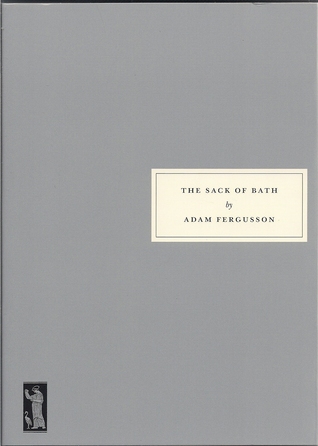 I really enjoy being a member of the various online book communities that I’m a part of, much as they are largely responsible for my enormous TBR pile and wishlist. I know I can find opinions on everything from the latest popular bestseller to obscure novels which I’d never have discovered on my own on GoodReads, LibraryThing and the various blogs I read. On this particular occasion it was LibraryThing which came up trumps when a few months ago it was pointed out that Amazon was offering pre-order copies of the newest Persephone The Sack of Bath by Adam Fergusson, for only £1. Having investigated the title it seemed a little outside of what I would expect from a Persephone book, but a £1 Persephone is not something that I’m able to turn down, so I ordered it regardless. I picked it up off the shelf to read recently because it was small and portable.
I really enjoy being a member of the various online book communities that I’m a part of, much as they are largely responsible for my enormous TBR pile and wishlist. I know I can find opinions on everything from the latest popular bestseller to obscure novels which I’d never have discovered on my own on GoodReads, LibraryThing and the various blogs I read. On this particular occasion it was LibraryThing which came up trumps when a few months ago it was pointed out that Amazon was offering pre-order copies of the newest Persephone The Sack of Bath by Adam Fergusson, for only £1. Having investigated the title it seemed a little outside of what I would expect from a Persephone book, but a £1 Persephone is not something that I’m able to turn down, so I ordered it regardless. I picked it up off the shelf to read recently because it was small and portable.
The Sack of Bath was written in 1973 in response to the decisions made by Bath City Council to demolish large swathes of Georgian cottages in order to provide the city with newer houses, better access and improved facilities. Fergusson acknowledges that the aim itself was admirable but the ways in which they sought to accomplish it were misguided. With words and pictures he illustrates the ongoing destruction of Bath and issues a heartfelt plea for it to be stopped and more reasonable measures, such as renovation and preservation, be considered instead.
Although The Sack of Bath is just as well written today as it was when it was first published, it lacks the immediacy which it would have had in the 1970′s when the demolition and construction was being carried out. It is interesting, yes, but in a vague and distant way rather than in an inciting-architectural-rage-and-writing-to-your-local-MP-to-stop-this-sort-of-thing way that I suspect it was intended. The closest thing that I can liken it to is reading a newspaper article covering some terrible natural disaster and trying to encourage readers to give aid, but doing so nearly forty years after the event when everyone appears to have recovered quite nicely, thank you very much. It just isn’t the same as reading it when it was relevant.
The problem is that the book is written in such hyperbolic language and strident tones that it implies nothing less than the wholesale destruction of historic Bath, which couldn’t be more different to what any visitor to Bath today will see as they walk around the city. In fact, the most recent new development is incredibly sympathetic to the aesthetics of the city and blends in beautifully (or as beautifully as modern high street shops ever could) with the historical setting. Admittedly this is probably at least in part due to the pressure of action such as the publication of The Sack of Bath but there is such a huge gap between this and the city overrun with hideous concrete boxes that you might expect from reading the book that it lost a lot of impact for me. Clearly this book was influential in its time and I have no doubt that it did a lot of good, but I didn’t find that it quite worked reading it now.
The Sack of Bath by Adam Fergusson. Published by Persephone, 2010, pp. 81. Originally published in 1973.
Review: ‘The House in Dormer Forest’ by Mary Webb
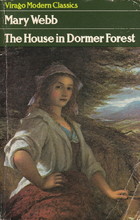 When The House in Dormer Forest by Mary Webb came up as May’s TBR Lucky Dip book, I was pleased for two main reasons. Firstly, it’s a Virago Modern Classic, which meant I could add another one to the ‘Read’ shelf on LibraryThing and not feel quite so bad about the large number still sitting glumly on the ‘To Read’ shelf. Secondly, it’s one of the novels parodied by Stella Gibbons in Cold Comfort Farm which I’ve been wanting to read for ages, and this provides me with the perfect excuse now that I have the requisite background reading. The very fact that Mary Webb’s book was the subject of parody should have been sufficient warning for me about what I was letting myself in for, but I wasn’t prepared for a book quite as amusingly terrible as The House in Dormer Forest turned out to be.
When The House in Dormer Forest by Mary Webb came up as May’s TBR Lucky Dip book, I was pleased for two main reasons. Firstly, it’s a Virago Modern Classic, which meant I could add another one to the ‘Read’ shelf on LibraryThing and not feel quite so bad about the large number still sitting glumly on the ‘To Read’ shelf. Secondly, it’s one of the novels parodied by Stella Gibbons in Cold Comfort Farm which I’ve been wanting to read for ages, and this provides me with the perfect excuse now that I have the requisite background reading. The very fact that Mary Webb’s book was the subject of parody should have been sufficient warning for me about what I was letting myself in for, but I wasn’t prepared for a book quite as amusingly terrible as The House in Dormer Forest turned out to be.
The House in Dormer Forest follows the fortunes of the Darke family and their servants who live and work in Dormer Old House. It’s difficult for me to summarise the plot so long after reading the book, but I’ve copied the blurb from the back of the book in my initial post concerning the novel. Suffice to say that it is dark and oppressive and Stella Gibbons can’t have had much work to do in producing a parody, as the writing is so incredibly overwrought it almost feels like a pastiche to begin with.
Occasionally (very occasionally), her writing is intentionally amusing as Webb reveals her characters to the reader:
“I can’t be thwarted!” grandmother suddenly broke out. She had a theory that, if crossed, she would die. She was fond of saying: “I’ve got a weak ‘eart, Rachel!” –dropping her “h” not because she could not aspirate it, but because she did not see why, at her age, any letter of the alphabet should be her master.
I think this perfectly encapsulates grandmother Darke’s (the obvious counterpart of Aunt Ada Doom in Cold Comfort Farm) tyrannical desire to control everything and the manipulation ways in which she does so.
Sometimes, the language is wild and beautiful, if rather over dramatic:
Dormer, in its cup at the bases of the hills, was always full of damp air and the sound of water. Besieged by this grievous music — and what is there in nature sadder than the lament of falling water? — she felt as if she had opened the door not to the night and the stream, but on to a future full of doubt and dread, veiled in mist.
Yes, it’s a little bit much, but it’s suitably atmospheric and I think it’s quite effective. I’m partial to the odd Victorian sensation novel so I am more than willing to forgive melodrama under the right circumstances. Unfortunately, the majority of the time, the language tends towards being florid to the point of being ridiculous:
Who would ever seek in Amber Darke, so still, of so sad-coloured an exterior, the creature of fire and tears that could feed a man’s heart with faery food and call him into Paradise with songs wild as those of hawks on the untrodden snow-fields?
I appreciate that Webb is trying to emphasise how plain Amber is compared to other more attractive, lively women and therefore unlikely to attract her ideal husband, but really, Mary, is this necessary? Faery food? Hawks? Untrodden fields (which seems an odd place for the hawks to be on; I would have assumed they were in the air as birds of prey hopping along the ground are really quite comedic and not at all wild and romantic as I think Webb is trying to suggest). Jane Eyre has exactly the same thoughts about being plain and therefore unlikely to attract attention, but Bronte manages to express them without recourse to overblown similes about hawks and fairies, in a way which makes the reader sympathise with Jane rather than giggle at her. Sadly for Amber, I found her impossible to relate to because her inner life is so ridiculous and extravagant rather than believeable.
The best example of this overwrought style comes when Jasper has gone to a track known ominously (everything in this novel happens ominously) as ‘the Beast Walk’ to think about things:
To climb this path harrowed his soul, made is face even at ten years look quite wizened. But now, in his young manhood, the dark spell was infinitely stronger. He drank here of a charm thick as black honey made from purple poison flowers by bees in hell.
Intellectually I know that this is supposed to show Jasper brooding and generally being consumed by dark thoughts; in reality I was too busy pondering why there are bees and flowers in hell, if the bees have committed some terrible sin and are therefore condemned to an eternity of making black honey and what this might be supposed to taste like. Who on earth imagines a hell which features bees and flowers? On the whole, I have to conclude that metaphors generally work best if the thing to which you are comparing something else actually exists or at the very least makes sense to your readers. This is just ridiculous.
I can forgive ridiculous writing if a book has something else to recommend it (as in the case of early gothic novels which I also rather enjoy). However, the plot of The House in Dormer Forest is one of sheer, unrelenting doom in which no one is ever happy and everyone goes on about it at length. The atmosphere is suffocatingly dark and claustrophobic, and while this may have been the desired effect I think it needed to be accompanied by better writing so that the reader could at least have had something to enjoy in the novel. The only grim humour comes in the form of Sarah, a servant who visits retribution on those who displease her by deliberately breaking their china ornaments and gluing the shards together to form a globe.
As always, my views are entirely subjective and it could be that I’ve missed the point of Webb’s novel entirely. Search for this book on Amazon UK and you will find the same effusive 5 star review posted no less than twenty-two times, which makes me somewhat dubious about it, but this review from a website featuing the Midlands in literature provides an interesting counterpoint to my own opinions which is much more praise-filled. The general consensus seems to be that this was by no means Webb’s best novel, so I will continue to read the rest of her books and see if I enjoy those more than I did The House in Dormer Forest.
The House in Dormer Forest by Mary Webb. Published by Virago, 1983, pp. 292. Originally published in 1920.
TBR Lucky Dip: October
Those of you with long memories may recall my TBR lucky dip project which I spoke about in my reading plans for the new year. Despite my best intentions, it failed to materialise in August or September as blogging took a back seat and getting married, going on honeymoon and settling into our new home came to the forefront. Now that I have time to read again, I’ve brought the challenge back and turned my TBR pile over to random selection once more.
Part of moving has involved packing up all my books and finding new homes for them on the new shelves. I’ve completely cleared out my LibraryThing catalogue and I’m only adding books back to it once they have a proper place (this is partially because the Thorn has suggested that I tag each book with its location so that he can find them all by himself). Consequently, www.random.org only had a small pool of books from which to select this month’s read, and the deities have ordained that it shall be book number 41. According to my TBR pile, that means that I am reading…
The Last and the First by Ivy Compton-Burnett
Ivy Compton-Burnett occupies a unique place in English literature. Unquestionably one of the greatest English novelists of the twentieth century, she seems to have been uninfluenced by any earlier writers: she is wholly and inimitably herself. When she died, in 1969, it was believed that she had completed one more novel. After a search, the manuscript — hand-written, and covering several exercise books — was found by a friend. All her admirers will be thankful and delighted that there is now, and finally, a nineteenth title to add to the Compton-Burnett canon. Like all its predecessors it is characterised by dry satirical wit and profound observation of human behaviour, aphoristic brilliance and total integrity. In particular it continues, and further refines, the economy and austerity of her later novels: here we have the distillation of her art.
She strictly observes her own conventions. Once again we have the English country house setting, around the turn of the century. This time there are two families at its centre, and the inevitable “power figure”, the tyrant. The members of the families interact and comment; there are a pair of typically delightful children; and the domestic “chorus” includes both housekeeper and butler, splendidly realised. On the face of it, this is a simple tale, but one that is packed with opportunities for Ivy Compton-Burnett to exploit her many gifts, and especially her unrivalled quality of irony, ruthless and comic. The dialogue, carrying the entire weight of characterisation, is more subtle and condensed than ever. Her final novel will be ranked among her finest.
I have never read anything by Ivy Compton-Burnett before so I’m a bit dubious about reading her last novel first, particularly as the foreword suggests that this one was pieced together after her death and so probably isn’t the best reflection of her work. I also feel as though I’m going into this book blind, as the internet has failed to yield any reviews or plot summaries which might provide an indication of what it is about. Nevertheless, I’ve heard some interesting things about Compton-Burnett and I know she is a favourite of Simon at Stuck in a Book, so I’m looking forward to giving her a go.
Review: ‘Pride and Prejudice’ by Jane Austen
 Back in January, I reread Sense and Sensibility by Jane Austen, and mentioned that I planned to reread all of Austen’s novels at some point this year. Despite my great love for these books, it took me until May to get to the second book on the schedule which was Pride and Prejudice, perhaps Austen’s best known work and a favourite for many. As before, I must warn you that this is less of a critical review and more of an enthusiastic appreciation of the novel which will no doubt give away parts of the plot (as if you didn’t already know them).
Back in January, I reread Sense and Sensibility by Jane Austen, and mentioned that I planned to reread all of Austen’s novels at some point this year. Despite my great love for these books, it took me until May to get to the second book on the schedule which was Pride and Prejudice, perhaps Austen’s best known work and a favourite for many. As before, I must warn you that this is less of a critical review and more of an enthusiastic appreciation of the novel which will no doubt give away parts of the plot (as if you didn’t already know them).
Although I find that each of Austen’s novels has a unique appeal which makes it impossible for me to choose between them, Pride and Prejudice is probably the book with which I am the most familiar. This novel was incredibly clear in my mind when I came to rereading it (and indeed remains so even after waiting a further six months to write the review) even though I haven’t read it for more than six years when I studied the text for A level. This familiarity is no doubt partially due to the many adaptations of Pride and Prejudice which exist, which means that many people feel as though they know the book even if they have never actually read it: I’ve seen the much-loved BBC adaptation starring Colin Firth and Jennifer Ehle, the more divisive Kiera Knightley film version and even a local stage adaptation. I know there are a whole host more that I haven’t touched. But it’s also because the Bennet family, Mr Bingley and his two awful sisters, Mr Darcy, the inimitable Lady Catherine de Bourgh, the slimy Mr Collins and the roguish Wickham are the sort of characters who stay with you long after the book has finished. I’d venture to say that the plot is pretty standard fare and even entirely predictable, but it is the characters that Jane Austen peoples the book with who make it so remarkable. I bet that most people after reading Pride and Prejudice just once would be able to describe how Lady Catherine, Lydia Bennet or Caroline Bingley would react in any given situation, and they aren’t even the main characters (no doubt the reason why this book has spawned so many spin-offs). It is this wonderfully believable character creation combined with fabulous writing, even more than the image of Mr Darcy in his wet shirt, which has made Pride and Prejudice so much a part of general literary consciousness.
What this latest encounter with Pride and Prejudice revealed to me is how much Jane Austen’s books are made for rereading. Austen is famed for her irony but I hadn’t realised until now quite how much proleptic irony there is, only obvious to the reader who has the advantage of knowing how things develop as the book progresses. For example, following Mr Collins’ proposal to Elizabeth, which makes me simultaneously squirm with embarrassment and giggle with laughter, there is this exchange:
It was absolutely necessary to interrupt him now.
“You are too hasty, Sir,” she cried. “You forget that I have made no answer. Let me do it without farther loss of time. Accept my thanks for the compliment you are paying me, I am very sensible of the honour of your proposals, but it is impossible for me to do otherwise than decline them.”
“I am not now to learn,” replied Mr. Collins, with a formal wave of the hand, “that it is usual with young ladies to reject the addresses of the man whom they secretly mean to accept, when he first applies for their favour; and that sometimes the refusal is repeated a second or even a third time. I am therefore by no means discouraged by what you have just said, and shall hope to lead you to the altar ere long.”
“Upon my word, Sir,” cried Elizabeth, “your hope is rather an extraordinary one after my declaration. I do assure you that I am not one of those young ladies (if such young ladies there are) who are so daring as to risk their happiness on the chance of being asked a second time. I am perfectly serious in my refusal. — You could not make me happy, and I am convinced that I am the last woman in the world who would make you so, — Nay, were your friend Lady Catherine to know me, I am persuaded she would find me in every respect ill qualified for the situation.”
Mr Collins’ complete refusal to take Elizabeth’s refusal seriously is amusing enough on its own, but an extra layer of humour is there in Elizabeth’s response for those who know what happens later. Although she insists that “I am not one of those young ladies (if such young ladies there are) who are so daring as to risk their happiness on the chance of being asked a second time” this is of course exactly what happens, unintentionally, between Elizabeth and Mr Darcy: she refuses his first proposal, eventually realises that in doing so she has thrown away her chance of happiness and then is given a second chance when he asks again. Even though Elizabeth is not playing coy games in this latter instance, it provides another chance for the knowing reader to see Elizabeth’s prejudices in action and for Jane Austen to prove her heroine fallible; not only is she wrong about Mr Darcy and Mr Wickham, she is also wrong about herself.
This time around, I also found I was able to read more objectively rather than always siding with Elizabeth Bennet (always tempting with such an entertaining and likeable character). On the first reading of this book, I followed Elizabeth’s lead exactly as Jane Austen (I think) intended, but on subsequent readings I have more knowledge of exactly how the plot develops than she does, and therefore it is impossible to fall in with her in quite the same way as I am looking out for different things. Whereas before I found myself carried away with indignant reproach and Mr Darcy’s rejection of Elizabeth, this time I found his attraction towards her far more obvious throughout the book. Although I loved reading the book and being thoroughly caught up in Elizabeth’s thoughts and feelings, I also enjoyed visiting it again with a greater distance between her opinions and my own and I think it makes Pride and Prejudice a much more humorous, interesting and thoughtful book. It is testament Jane Austen’s great skill as a writer that I find all her books work in this way, offering more to me as a reader the more times I return to them.
There are so many things that I haven’t mentioned here: the wonderful comedic characters of Mrs Bennet and Lady Catherine, the sweet romance between Jane and Bingley, the dynamic that exists between the Bennet sisters. There is so much to appreciate in this wonderful novel that I couldn’t possibly cover it all. Needless to say, I think it is deserving of its status as both a classic and a popular novel. I can’t wait to rediscover my next Austen now!
Pride and Prejudice by Jane Austen. Published by Virago, 1989,pp. 299. Originally published in 1813.
Commonplace Quotations: Forgotten Rooms
Now, no beauty blushed and dimpled along the sides of the Cranford Assembly Room; no handsome artist won hearts by his bow, chapeau bras in hand; the old room was dingy, the salmon-coloured paint had faded into a drab; great pieces of plaster had chipped off from the white wreaths and festoons on its walls; but still a mouldy odour of aristocracy lingered about the place, and a dusty recollection of the days that were gone made Miss Matty and Mrs. Forrester bridle up as they entered, and walk mincingly up the room, as if there were a number of genteel observers, instead of two little boys with a stick of toffy between them with which to beguile the time.
- Cranfordby Elizabeth Gaskell
When I was reading Cranford today, I came across this lovely passage and was instantly put in mind of our wedding day (as if I need an excuse). Our reception was held in the old Winchester Assembly Rooms which have just such salmon walls and plaster moulding and the same slightly sad air of faded grandeur that Gaskell describes. Unless someone told you about this place you would never even know it was there, so it felt wonderful to revive the place with some proper dancing (though probably much less decorous than any Jane Austen would have witnessed if ever she visited) and laughter, if only for a night.
Review: ‘Drina’s Dancing Year’ by Jean Estoril
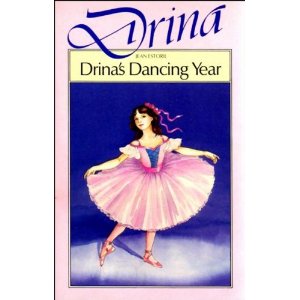 This year I’ve been reading more sweet, warm, comforting books than I usually do. This has resulted in revisiting some childhood favourites, amongst which, as you may remember, are the Drina books by Jean Estoril. Drina’s Dancing Year is the second installment in this eleven book series and I enjoyed rereading the gentle story as just as much as I did the first book.
This year I’ve been reading more sweet, warm, comforting books than I usually do. This has resulted in revisiting some childhood favourites, amongst which, as you may remember, are the Drina books by Jean Estoril. Drina’s Dancing Year is the second installment in this eleven book series and I enjoyed rereading the gentle story as just as much as I did the first book.
While the first book Ballet for Drina stands on its own as a complete story, its primary purpose is to provide the necessary background information to set up the rest of the series. Drina’s Dancing Year continues this format: it tells the story of Drina’s first year at the Dominick ballet school and of her determination to succeed on her own merit rather than revealing her secret, but it is also an important part in the overall arch of Drina’s journey towards becoming (as I assume she inevitably will, these being happy children’s books) a world class ballerina. This book covers Drina starting at school, making friends with the poor but sweet Rose and enemies with proud, odious Queenie, and also Drina’s inexplicable failure to get a part in the Christmas show, which turns out to be less disappointing than she fears.
I was surprised at how well this book stood up to being reread. Although some of the concerns and attitudes can seem a little old fashioned, Mrs Chester liking Rose in spite of her lower class stands out particularly) the story itself remains charming and engaging. I found myself getting wrapped up in the little dramas of Drina’s life in spite of the outcome being obvious even if I hadn’t read the book before.
I think that Drina ages convincingly; this book shows her character developing in a way that is in line with a little girl who is one year older and a little more experienced. She doesn’t change, but her traits become more subtle and I liked this. The supporting characters continue to be likeable and just different enough to give them some interest, even if this is only in relation to Drina. Estoril’s mean characters are all very similar, but they aren’t the focus of any of the books so far so this is less annoying than it could be.
The Drina books are a lovely series, and I continue to recommend them to anyone who enjoys old fashioned ballet stories.
Drina’s Dancing Year by Jean Estoril. Published by Macdonald, 1988, pp. 176. Originally published in 1958.
